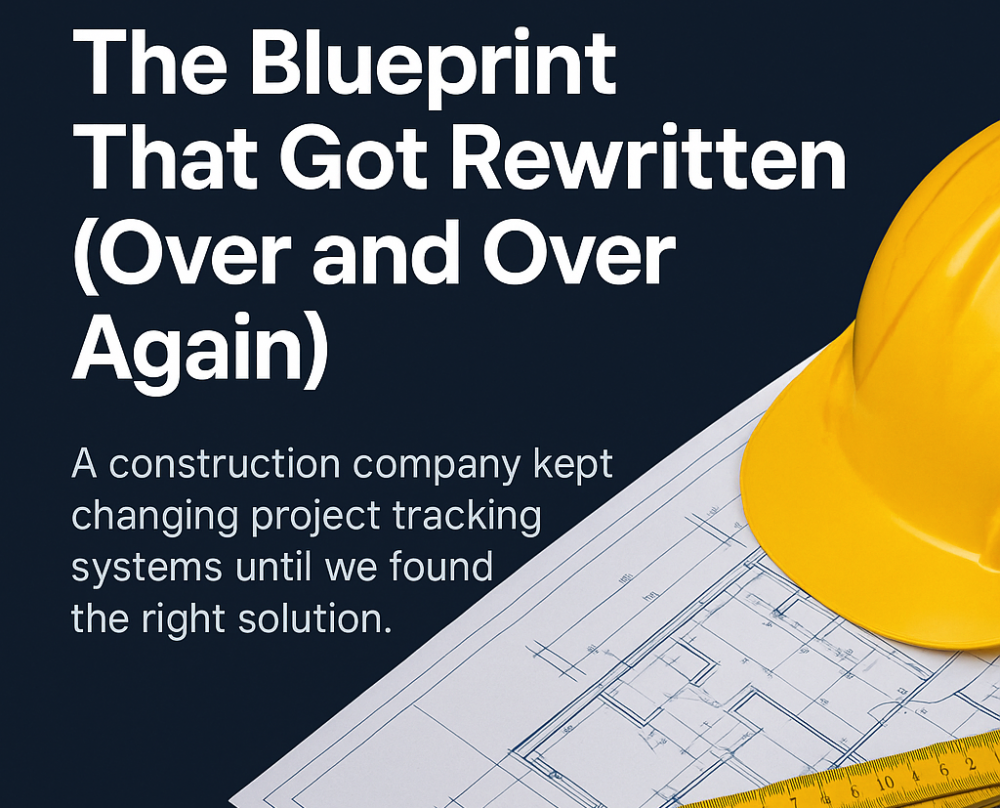
A few months ago, we started working with a mid-sized construction company that had been through three different project tracking systems in less than five years.
Each time, the goal was the same: to streamline job costing, scheduling, and subcontractor coordination. But with every system, frustrations piled up. Paper was still everywhere. Communication lagged. Overruns continued. They were ready to try a fourth system when someone on their team said, “Maybe it’s not the software. Maybe it’s how we’re setting it up.”
They were right.
Here’s what had happened — and maybe it sounds familiar:
-
The first system came bundled with accounting software. But no one had time to customize it for field operations. Superintendents never touched it. Estimators used Excel on the side.
-
The second one was suggested by their IT consultant. It worked well for manufacturers but didn’t speak the language of job sites or draw schedules. It was abandoned within a year.
-
The third looked promising, but no one had mapped how work actually flowed between office, field, and subs. The result? Wrong reports, missed dependencies, confusion on change orders.
The software wasn’t bad. But just like a building project without a site plan, it was layer after layer built on assumptions. And when you build on shaky ground, things fall apart.
So What Did We Do at Topcone?
We did what builders do best: started with a solid foundation.
Before writing a single line of code, we spent time on-site. We watched how foremen communicated, how schedules shifted, and how delays were tracked (or weren’t). We talked to project managers, estimators, and even subs — the people who rarely get asked what they need from a system.
Only then did we design a platform that fit their actual workflow — not an idealized version of it.
And we didn’t hand it off and walk away. We rolled it out in phases. Adjusted where needed. Checked for adoption. Made sure the “irrigation system” was connected and working before the new “sod” went in.
Now? It Works.
They finally stopped switching software every year. The system is working because it fits. Not because it’s fancy. But because it’s real.
The lesson?
Software is like construction: if the blueprint doesn’t reflect how things really work, it doesn’t matter how great the materials are. You’re going to rebuild. Again.